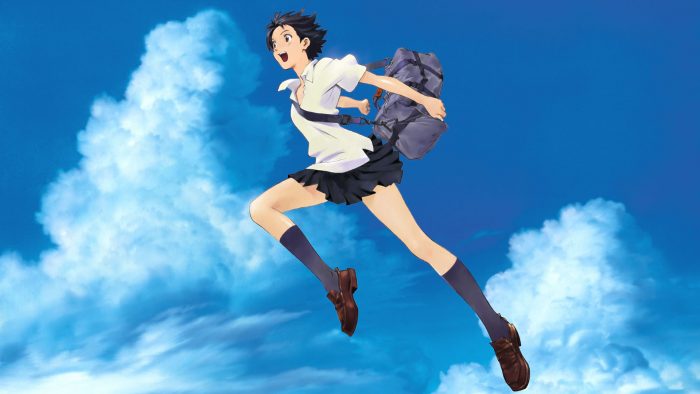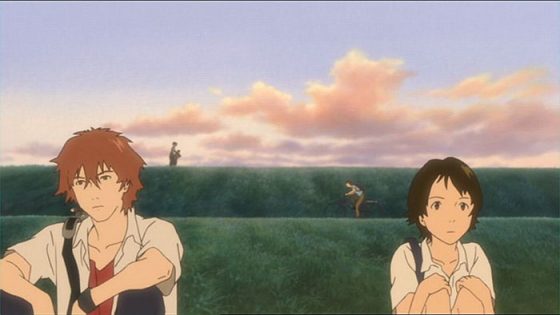
The Girl Who Leapt Through Time (Toki wo Kakeru Shoujo) is written by Satoko Okudera, known for Summer Wars and Wolf Children, and directed by Mamoru Hosoda, whose works include The Boy and the Beast and Mirai of the Future. The Girl Who Leapt Through Time is an award winning film that sprang into theaters in 2006. Through the eyes of the free-spirited Makoto Konno, viewers can appreciate an intimate story about time travel, a blooming romance, and the adolescent experience.
For this article, I’ll be discussing how the film invites scrutiny through its unreliable protagonist, how the film helps one keep track of the story, and how the film uses its time traveling concept to unveil character. By revealing this, I hope to show how The Girl Who Leapt Through Time captures the naiveté of our youth and crafts it into a touching tale.
Invoking Scrutiny: Makoto as the Unreliable Narrator
From the beginning, the protagonist, Makoto, is depicted as a clumsy, outspoken school girl. Even when she narrates her own life, she aptly fumbles, displaying qualities opposite of her own description—an unreliable narrator.
By having this occur early, viewers are led to question the film. Thus, when the film implies where it’s going, the viewers anticipate it, engaging them further. The film takes the proverbial gun from the wall and fires. Its “shots” often foreshadow its future.
One example is during Makoto’s bike ride to school. During this sequence, music plays as the film names its staff. As she travels down the slope of a hill, Makoto struggles to stop right next to a gate, barring her from an oncoming train. The train bells echo loudly, and Makoto apologizes to the locals about causing a scene.
Fast forward, Makoto must travel that same route back home, and just as she did before, she travels recklessly, forgetful of what occurred before. This time, the film pays out on its investment, creating anxiety from our memory of the train stop.
As Makoto reaches the gates, our fears are realized. She crashes into the gates, and the sound of a (funeral) gong echoes, carving her death into our eyes and ears. Just as the character is direct, so is the film. By only travelling forward, Makoto will never get to her destination—her needs as a character.
Visual Indicators: Keeping Track of the When and How
To make a film easy to follow, visual indicators can be used without sacrificing pacing. For example, when a flashback occurs, a filmmaker can use sound effects to indicate the past, a filter to influence the color of the shot, text on the screen to indicate the time period, and a myriad of other options.
In the context of time travel, the director wants to establish signifiers about when the action is taking place. Instead of using exposition (stating descriptive details), sound, repetition of action, familiar shots, and editing is used to convey when and how things occur.
At the beginning of the film, the sound of cicadas allows us to guess the season: summer. As mentioned before, the sounds of the train are purposefully loud. When we hear that sound, we also know the date (when characters die) as well as the time—a shot of a clock appears just before their fate.
Once Makoto recognizes she can leap through time, the film establishes her iconic leap and entrance. Her leap indicates when she starts to time travel and her entrance, a charming roll into the next shot, is when she has finished.
After leaps and rolls have been recognized, the editing uses them to playfully transition scenes. For example, when Makoto is playing catch with friends, she rolls in one shot, then the next, and the next. Each roll, she catches a ball, implying she time traveled several times to learn its trajectory.
With visual indicators, directors can guide viewers and properly convey information without words.
Revealing Character Through Time: Actions Meet Consequences
Consequences are obvious in the film, despite our oblivious protagonist. By witnessing repetition, viewers become accustomed to the flow of events and their natural results—cause and effect. After seeing these events enough, we can assume their results while learning Makoto’s character.
Makoto is childish and blissfully unaware. When she’s told that Chiaki has feelings for her, she’s surprised. When her aunt explains time leaps, she literally leaps, thinking it will send her back. Even after time traveling, she influences events without understanding their consequences.
Presumably, that’s how she’s approached life—always looking forward, rarely looking back. Makoto rarely thinks about her actions. This is the core problem the film wants to resolve. To do so, it ups the stakes.
A countdown is shown on Makoto’s arm. Instinctively, the audience knows something terrible looms once it hits zero. Makoto has taken time traveling for granted, and just like how every action has a consequence, so will her forgetfulness.
However, it’s far too late. When her final leap has been used—once more on something trivial—Makoto must bear the full weight of her carelessness. Her friend, now together with a love interest, takes Makoto’s bike towards the train stop. Unable to brake, both characters slam into the train gates and die a death once meant for Makoto.
Makoto can no longer ignore what she’s done and must accept the outcome. Her carelessness has killed her friends. After this event, just as the movie established her character through repetition, it will do the same to show her change.
Final Thoughts

It’s been awhile since I’ve seen this film. However, it’s charm still leaves and impression, even after so many years. I’ve always loved a good story about time travel, so it was enlightening to see how A Girl Who Leapt Through Time added its own spin on the concept.

